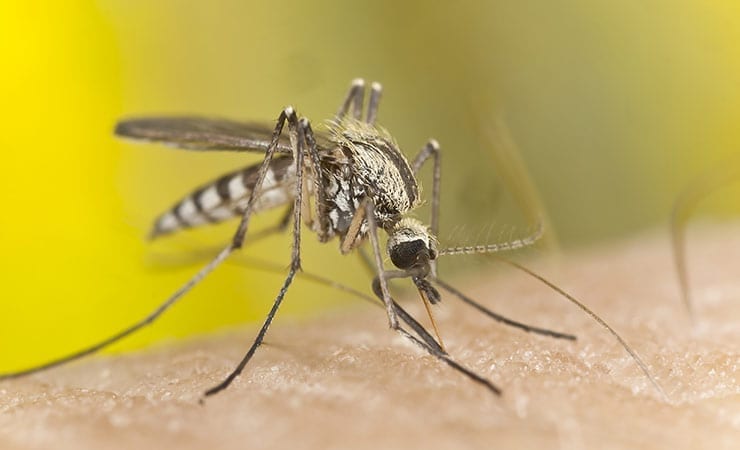The U.S. Army Public Health Command (USAPHC) is responding to the rapidly emerging threat of chikungunya viral infections in the United States.
Although the chikungunya virus is not new, its emergence in the Caribbean makes it a disease of concern to the U.S. mainland. Chikungunya is spread by two species of mosquitoes that are commonly found in the U.S
“Chikungunya is most often spread to people by Aedes aegypti and Aedes albopictus mosquitoes,” explained Capt. Heather Ferguson, USAPHC entomologist. “If an infected person is bitten by a mosquito, that mosquito may spread the virus by biting another person.”
One way public health experts monitor the spread of chikungunya is by tracking reports from medical providers of the cases that occur in people.
“Isolating human cases from further bites of mosquitoes, if done efficiently and in time, can help stop the spread of the infection,” said Farida Mahmood, entomologist at Public Health Command Region-South.
Experts also track the location of mosquitoes that carry the chikungunya virus.
“Installation preventive medicine personnel collect mosquitoes from traps and then send them to USAPHC laboratories where they can be identified, prepared and tested to determine if the virus is present,” explained Ferguson.
“Surveillance of mosquito populations in and around installations is done with the goal of finding the presences of the virus before human cases occur,” said Capt. Brian Knott, another USAPHC entomologist. “If the virus is found in the mosquitoes in an area, intensive, focused control efforts can be initiated. By targeting those mosquitoes actively carrying the virus, the Army can maximize its resources and achieve the best possible results. Ongoing surveillance is also our means of evaluating our surveillance efforts.”
“The mosquitoes that carry the virus bite mostly during the daytime,” said Knott. “Understanding the behavior of the vector can help in educating Soldiers about prevention.”
Most individuals have been taught to expect mosquito bites at dawn and dusk. Mosquitoes that are active during the day require the extension of preventive measures throughout the day. These measures include wearing insect repellant with DEET, wearing light-colored, long-sleeved shirts and long pants.
“Educating Soldiers and their families about how to protect themselves from chikungunya is extremely important, should the virus continue to spread to the U.S. mainland,” Knott said.
Other preventive measures include stopping mosquitoes from reproducing.
“Removal of all container breeding sites is key to prevention of chikungunya,” said Knott. “Educating installation preventive medicine personnel and families about the need to empty water from old tires and other outdoor containers that collect water, is a vital piece of our mission.”
Since the mosquitoes that carry chikungunya are container-breeders, this trait helps entomologists and installation environmental personnel conduct surveillance.
“Carbon dioxide-baited traps are used to collect mosquitoes for surveillance on installations,” said Knott. “In addition, deploying the new lethal ovitrap can help cut down on the numbers of these mosquitoes by killing the females who use the trap to lay their eggs.”
Controlling mosquito populations and monitoring human populations for the disease contribute equally to protecting Soldiers and families.
“Surveillance of any disease vectors involves cooperation across the military public health system. The entomological sciences and laboratory programs detect infected mosquitoes, while the Disease Epidemiology Program monitors human outbreaks and case reports in our Army population,” said Lt. Col. Laura Pacha, a USAPHC physician and epidemiologist.
While testing patients for the virus is done in hospital laboratories, testing of mosquitoes to see if they carry the virus is done in USAPHC laboratories once they have been collected in surveillance traps.
Source: U.S. Army Public Health Command Public Affairs, adapted.



